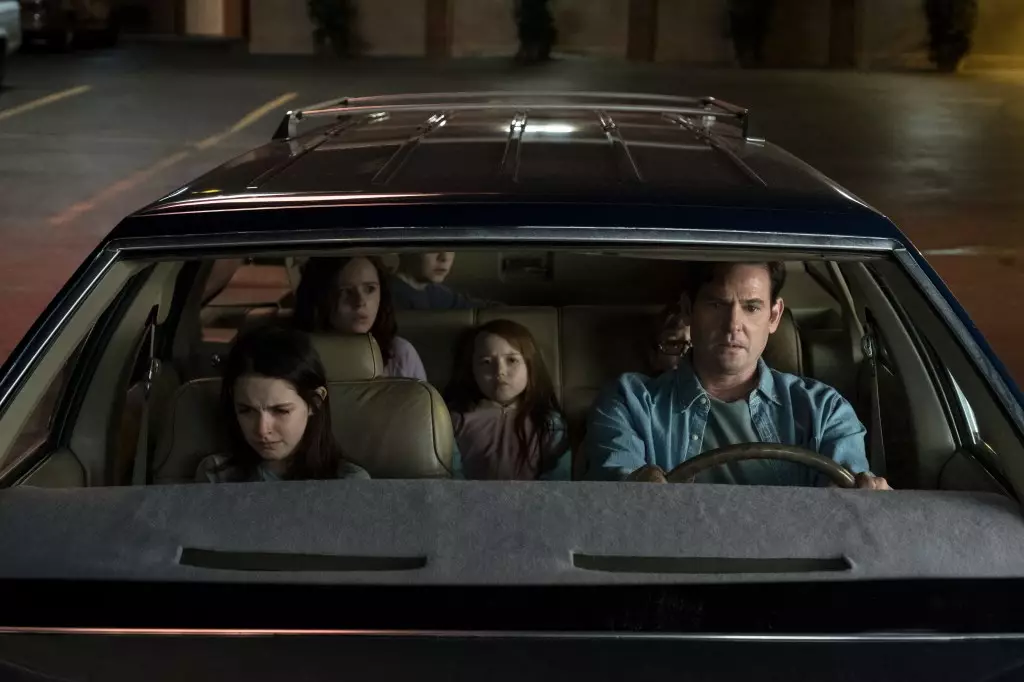Mike Flanagan, a celebrated director in the horror genre, has recently opened up about how his creative endeavors serve as a therapeutic conduit for processing grief and personal loss. With the anticipation surrounding the premiere of his latest film, *The Life of Chuck*, at the inaugural SXSW London, Flanagan’s commentary reflected a psyche shaped significantly by melancholy. His Netflix series, *The Haunting of Hill House*, was particularly poignant, emerging from a deeply personal place following a family tragedy. The show, recognized for its hauntingly evocative narratives, allows audiences a glimpse into Flanagan’s internal struggle. His candid acknowledgment of channeling traumatic memories into artistic expression raises compelling questions about the intersection of creativity and mental health.
In Flanagan’s words, the eerie settings and character arcs in *Hill House* were infused with elements of his dreams and nightmares during times of profound distress. Understanding horror as a reflection of real emotional experiences, he confesses, “That show is me trying to deal with grief and loss.” Such transparency highlights an essential truth about art: it often emerges from our darkest corners, transformed into something relatable and poignant. For Flanagan, this creative outlet not only aids in his healing but also offers solace to viewers who grapple with similar adversities, urging them to see their struggles echoed on screen.
Horror as a Medium for Healing
Flanagan’s exploration of grief does not end with *Hill House*; rather, it permeates his broader oeuvre, including *Doctor Sleep* and *Midnight Mass*. These titles reflect a deeper personal battle against addiction and loss, serving both as narrative vehicles and as instruments of recovery. Flanagan equates the process of storytelling with a form of therapy, wherein the act of creating accessible narratives provides a crucial framework not only for viewers but also for himself. His candid testament that through his work, he found pathways to sobriety cements the role of art as a powerful healing agent.
His ability to infuse horror with listenable narratives addresses a prevalent stigma: the genre is often dismissed as lacking depth or complexity. Flanagan’s oeuvre argues that terror represents a unique lens through which we might examine profound human experiences—including vulnerability, fear, and redemption. His contention that the horror genre frequently transcends cliché to reveal beautifully articulated stories challenges existing perceptions, urging audiences to embrace a broader understanding of what horror can achieve.
The Underrated Complexity of Horror
During the SXSW session, Flanagan eloquently lamented the “bias against horror” prevalent both within the industry and among audiences. He articulated the cyclical nature of engagement with the genre, where breakthroughs like Jordan Peele’s Oscar-winning endeavors briefly shine a spotlight on horror’s narrative depth, only to have this sentiment fade all too quickly. Flanagan’s assessment reveals a frustrating reality: audiences remain astonished by the genre’s capacity for storytelling, despite its rich history of artistic merit.
Horror, in its essence, is deeply rooted in the exploration of human psyche and societal fears. Flanagan argues that this enduring struggle for recognition reflects a misunderstanding of horror narratives’ cultural significance. They are not merely about frights or gore; instead, they are intricate tapestries woven from emotional truth and philosophical inquiries into human nature. This vital aspect of horror seems to often get overshadowed, neglected in discussions about cinematic artistry.
Collaboration with the Master of Horror
Flanagan’s collaborations with Stephen King add an intriguing layer to this conversation. Although King is synonymous with horror, Flanagan asserts that his storytelling transcends typical genre constraints. He describes King as a “gooey-hearted, lovely humanist” whose narratives delve into the emotional and empathetic threads of human experience. In his analysis, Flanagan reveals a vital element of King’s writing: horror elements arise organically, born from the soul of the characters themselves rather than being shoehorned into a narrative merely for shock value. This perspective invites audiences to reconsider the fundamental nature of horror as a vehicle for expressing the human condition.
In an industry that often prioritizes marketability over artistic integrity, Flanagan stands as a defender of the monologue—an art form he believes remains essential to cinematic storytelling. His insistence on the power of words reflects a dedication to narrative craftsmanship that resonates with the current state of an ever-evolving medium. His plea for preserving this critical storytelling technique underscores the art of performance and dialogue as powerful catalysts for audience connection and emotional depth.
Flanagan’s journey intertwines trauma and creativity, illuminating the boundless capacity of horror as a means to confront and express the complexities of human experience. Through his work, he invites us to not only confront our fears but to embrace the narratives that emerge from our pain, enriching both ourselves and the collective human story.

